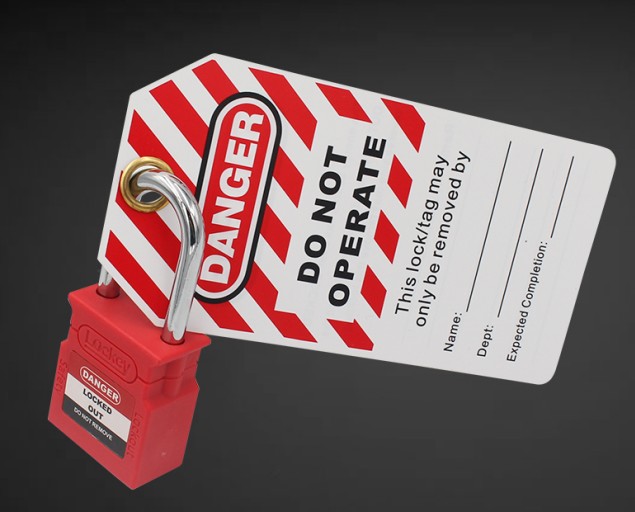OSHA instructs maintenance personnel to lock, tag, and control hazardous energy sources. Some people don’t know how to take this step, every machine is different. Getty Images
Among people who use any type of industrial equipment, lockout/tagout (LOTO) is nothing new. Unless the power is disconnected, no one dares to perform any form of routine maintenance or attempt to repair the machine or system. This is just a requirement of common sense and the Occupational Safety and Health Administration (OSHA).
Before performing maintenance tasks or repairs, it is simple to disconnect the machine from its power source-usually by turning off the circuit breaker-and lock the door of the circuit breaker panel. Adding a label that identifies maintenance technicians by name is also a simple matter.
If the power cannot be locked, only the label can be used. In either case, whether with or without a lock, the label indicates that maintenance is in progress and the device is not powered.

However, this is not the end of the lottery. The overall goal is not simply to disconnect the power source. The goal is to consume or release all hazardous energy-in OSHA terms, to control hazardous energy.
An ordinary saw illustrates two temporary dangers. After the saw is turned off, the saw blade will continue to run for a few seconds, and will only stop when the momentum stored in the motor is exhausted. The blade will remain hot for a few minutes until the heat dissipates.
Just like saws store mechanical and thermal energy, the work of running industrial machines (electric, hydraulic and pneumatic) can usually store energy for a long time. Depending on the sealing ability of the hydraulic or pneumatic system, or the capacitance of the circuit, energy can be stored for an astonishing long time.
Various industrial machines need to consume a lot of energy. The typical steel AISI 1010 can withstand bending forces of up to 45,000 PSI, so machines such as press brakes, punches, punches, and pipe benders must transmit force in units of tons. If the circuit powering the hydraulic pump system is closed and disconnected, the hydraulic part of the system may still be able to provide 45,000 PSI. On machines that use molds or blades, this is enough to crush or sever limbs.
A closed bucket truck with a bucket in the air is just as dangerous as an unclosed bucket truck. Open the wrong valve and gravity will take over. Similarly, the pneumatic system can retain a lot of energy when it is turned off. A medium-sized pipe bender can absorb up to 150 amperes of current. As low as 0.040 amps, the heart can stop beating.
Safely releasing or depleting energy is a key step after turning off the power and LOTO. The safe release or consumption of hazardous energy requires an understanding of the principles of the system and the details of the machine that needs to be maintained or repaired.
There are two types of hydraulic systems: open loop and closed loop. In an industrial environment, common pump types are gears, vanes, and pistons. The cylinder of the running tool can be single-acting or double-acting. Hydraulic systems can have any of three valve types-directional control, flow control, and pressure control-each of these types has multiple types. There are many things to pay attention to, so it is necessary to thoroughly understand each component type to eliminate energy-related risks.
Jay Robinson, owner and president of RbSA Industrial, said: “The hydraulic actuator may be driven by a full-port shut-off valve.” “The solenoid valve opens the valve. When the system is running, the hydraulic fluid flows to the equipment at high pressure and to the tank at low pressure,” he said. . “If the system produces 2,000 PSI and the power is turned off, the solenoid will go to the center position and block all ports. Oil can’t flow and the machine stops, but the system can have up to 1,000 PSI on each side of the valve.”
Post time: Sep-04-2021

